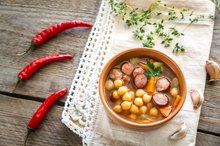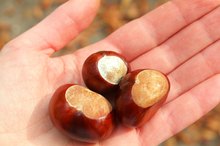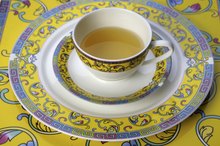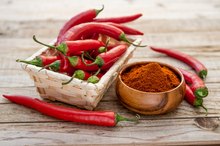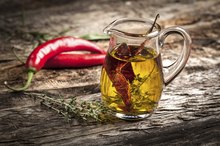What does fact checked mean?
At Healthfully, we strive to deliver objective content that is accurate and up-to-date. Our team periodically reviews articles in order to ensure content quality. The sources cited below consist of evidence from peer-reviewed journals, prominent medical organizations, academic associations, and government data.
- “American Journal of Health-System Pharmacy”; Potential Interactions Between Alternative Therapies and Warfarin; A.M. Heck et al.; July 2000
- “American Journal of Health-System Pharmacy”; Potential Interactions Between Alternative Therapies and Warfarin; A.M. Heck et al.; July 2000
- National Institutes of Health: Warfarin
The information contained on this site is for informational purposes only, and should not be used as a substitute for the advice of a professional health care provider. Please check with the appropriate physician regarding health questions and concerns. Although we strive to deliver accurate and up-to-date information, no guarantee to that effect is made.
Cayenne Pepper and Warfarin
According to Drugs.com, peppers are among the most commonly used spices in the world, and people in some Southeast Asian countries consume an average of 5 g red pepper per day 1. However, a major safety concern is the potential for an interaction between cayenne pepper and some medicines, including warfarin 3. Interactions with warfarin are potentially serious because small changes in warfarin blood levels can have harmful effects. Consult with your doctor before using cayenne peppers medicinally.
If you are experiencing serious medical symptoms, seek emergency treatment immediately.
About Warfarin
Warfarin is in a category of medicines called anticoagulants, which means it slows the body’s blood clotting process. You may be taking warfarin if you have blood clots in your veins or lungs. Warfarin is also used by people who have an irregular heart rhythm called atrial fibrillation, which can cause dangerous blood clots to form in the body. It is also prescribed to prevent stroke in some people.
- Warfarin is in a category of medicines called anticoagulants, which means it slows the body’s blood clotting process.
- Warfarin is also used by people who have an irregular heart rhythm called atrial fibrillation, which can cause dangerous blood clots to form in the body.
How It Works
The Effect of Folic Acid on Coumadin
Learn More
The active component in cayenne peppers is capsaicin. Capsaicin works to alleviate pain by blocking a chemical called substance P, which is responsible for transmitting pain messages to the brain. When substance P is inhibited, pain signals no longer go to the brain and the person experiences pain relief. Capsaicin produces only a short-term effect on substance P, so people need to keep taking it to sustain the pain relief.
- The active component in cayenne peppers is capsaicin.
- Capsaicin produces only a short-term effect on substance P, so people need to keep taking it to sustain the pain relief.
Interaction With Warfarin
A report published in “American Journal of Health-System Pharmacy” in 2000 supported the interaction between warfarin and capsaicin 34. Cayenne pepper increases the time blood needs to clot, and when taken with anticoagulant medicines like warfarin, the effect of the medicine may be intensified, says DrugDigest.org. This increases the risk of uncontrolled bleeding, which can present as symptoms such as bloody urine or stool, spitting up blood, unusual bruising and continued bleeding from minor cuts.
Other Considerations
L Arginine & Warfarin
Learn More
You may experience a similar effect if you take cayenne pepper with other herbs that decrease blood clotting, such as:
- garlic
- ginger
- ginkgo
- ginseng
- horse chestnut
- red clover
- saw palmetto
Related Articles
References
- Drugs.com: Capsicum Peppers
- PaloAltoMedicalFoundation.org: Cayenne
- “American Journal of Health-System Pharmacy”; Potential Interactions Between Alternative Therapies and Warfarin; A.M. Heck et al.; July 2000
- National Institutes of Health: Warfarin
- Coumadin (warfarin sodium) [package insert]. Princeton, New Jersey: Bristol-Myers Squibb, 20XX.
- Harter K, Levine M, Henderson SO. Anticoagulation drug therapy: a review. West J Emerg Med. 2015;16(1):11-7. DOI: 10.5811/westjem.2014.12.22933
- Patel S, Patel N. Warfarin. In: StatPearls [Internet]. Treasure Island (FL): StatPearls Publishing.
- Tideman PA, Tirimacco R, St John A, Roberts GW. How to manage warfarin therapy. Aust Prescr. 2015;38(2):44-8. DOI: 10.18773/austprescr.2015.016
Resources
Writer Bio
Diana Kaniecki has been writing health-related articles since 1991. Her work has appeared in peer-reviewed health journals including the "American Journal of Cardiology," "Chest" and "Pharmacoeconomics." She also develops health technology products for wellness and chronic illness self-management. Kaniecki received her Doctor of Clinical Pharmacy from St. Johns University.
